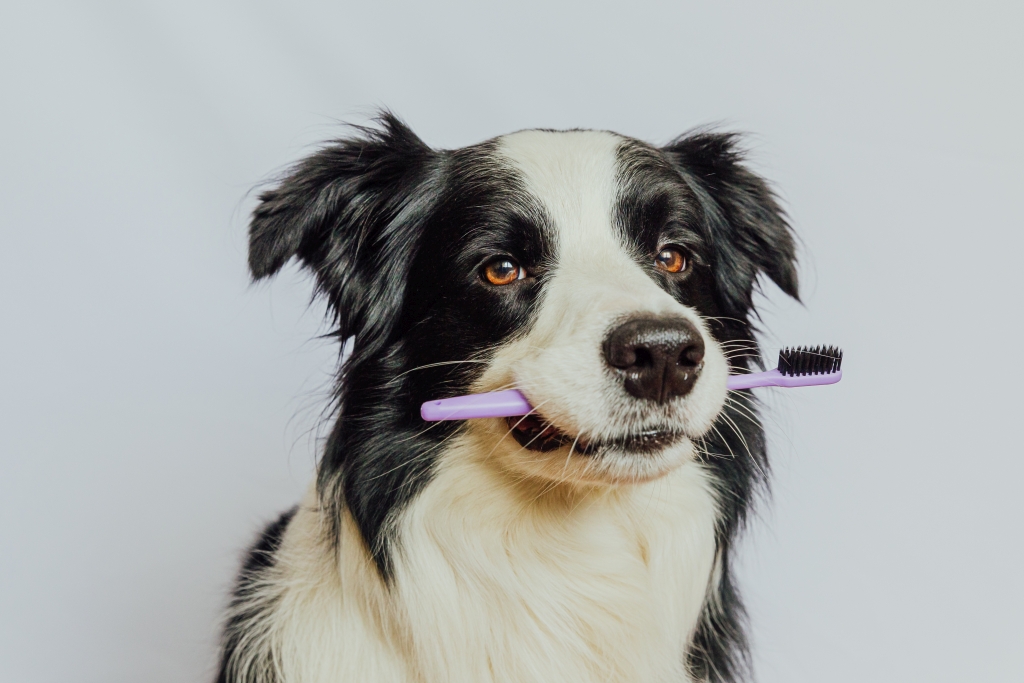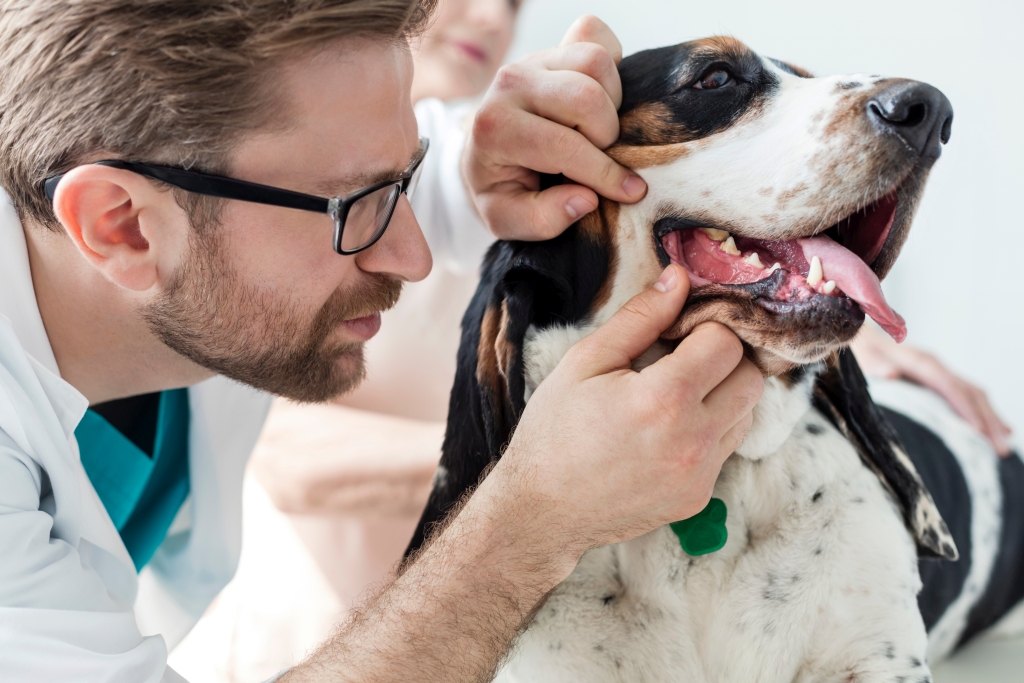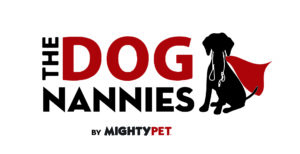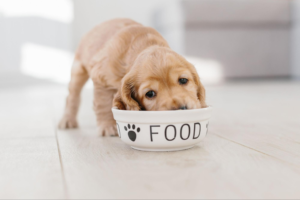Dental health is an important component of our pets’ overall wellbeing, just as it is for our own wellbeing. Unfortunately, we often overlook our pets’ dental health. We assume that dental problems will be obvious, or that it’s normal for animals to have yellowing teeth and yucky breath.
In this blog post, we’ll correct some of those misconceptions. We’ll also give you some information on how to prevent dog dental problems, as well as how to spot issues when they do occur.
Dog Dental Health
Adult dogs have 42 teeth: 20 on the top and 22 on the bottom. Puppies have 28 temporary teeth, which they typically lose by the time they are six months old. Dogs have four types of teeth: incisors, canines, premolars and molars.
Each type of tooth serves specific functions, much like human teeth do. It’s important that all of your dog’s teeth are healthy and intact so that his or her mouth can keep working properly!
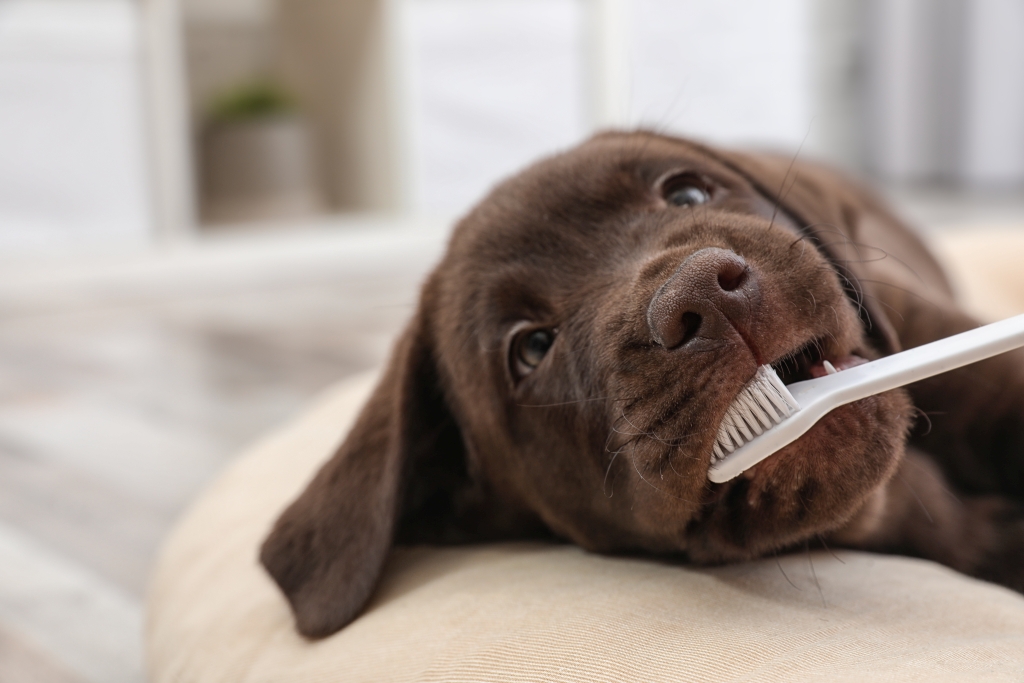
How to brush a dog’s teeth
Veterinarians recommend that you brush your dog’s teeth a minimum of three times per week, and up to twice per day. How often you brush your dog’s teeth will probably depend on your schedule and your dog’s willingness to cooperate, but always try to hit that three-per-week minimum.
It’s best to train your dog to accept tooth brushing while he or she is still a puppy, if possible. The earlier you can get your dog used to this routine, the better. However, that’s not an option for everyone. You can still teach your dog how to accept tooth brushing regardless of age. Here are a few key steps to follow.
- Choose the right time and place. Pick a time when your dog is relaxed, and take him or her to a calm, quiet place. This will keep your dog from becoming anxious, excited or otherwise overstimulated during the process.
- Get in a comfortable position. You should position yourself so that you can easily reach into your dog’s mouth and brush all their teeth. If you have a small dog, you may be able to hold him or her in your lap during the process. If you have a large dog, sit in a chair next to your dog and securely hold his or her head.
- If your dog is used to brushing, you can give him or her a little taste of toothpaste to make sure they are still okay with the taste. Then, you can begin brushing: place the toothbrush at your dog’s gum line, at a 45-degree angle against their teeth, and focus on cleaning plaque away from the gum line. Use circular motions, like you would on your own teeth. Always be gentle and reassuring to your dog throughout the process.

- If your dog is still getting used to the brushing process, warm him or her up by gently rubbing the gums with a soft cloth or your finger. Use a gentle back-and-forth motion. Stay on the outside of the teeth and near the gumline to avoid being bitten and to acclimate your dog to the feeling of brushing.
- Once your dog is used to this sensation, allow him or her to have a small taste of dog toothpaste. NEVER use human toothpaste to brush a dog’s teeth. It can be very dangerous for your dog. Dog toothpaste is specially formulated to be safely swallowed. Plus, it comes in flavors that your dog will find appetizing.
- If your dog is still getting used to tooth brushing, you can use your finger to rub the toothpaste along his or her gums. After your dog gets used to this process, you can start using a dog toothbrush to clean his or her teeth. Follow the instructions in step 3 for good brushing technique.
Some dogs are unfazed by tooth brushing, while others loathe the whole process. Either way, you should stick with it until your dog comes to accept it, because it’s very important to his or her health. There is one exception: if your dog has serious behavioral issues or aggression problems, don’t try to brush his or her teeth on your own. Talk to your vet and come up with a plan that keeps both you and your dog safe.
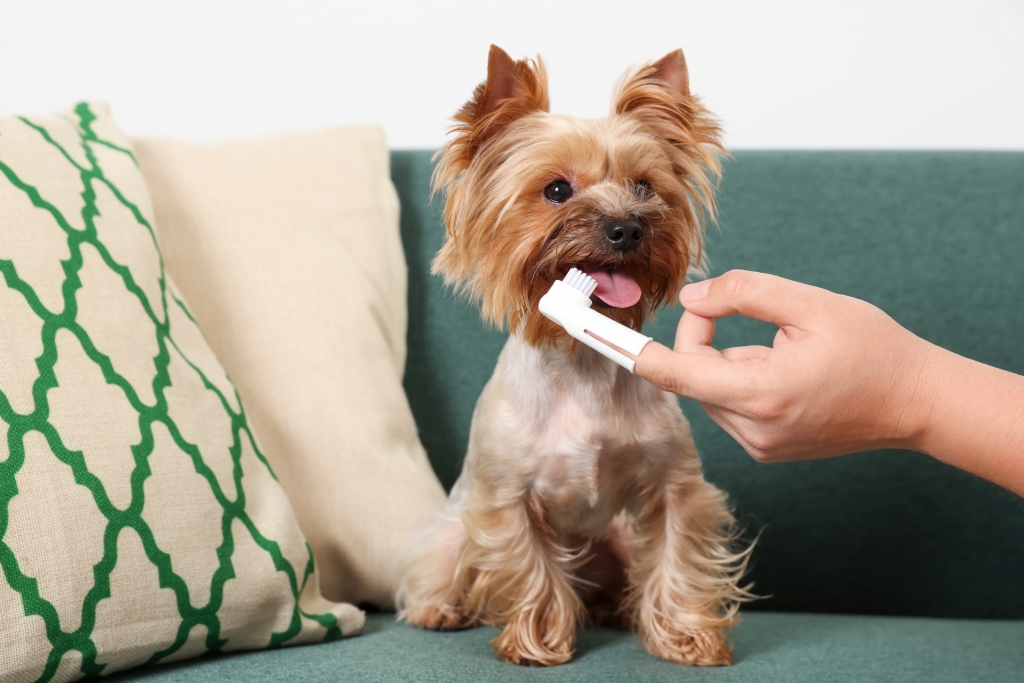
Signs of unhealthy dog teeth
- It’s good to check your dog’s mouth regularly for anything that seems off. The signs of tooth problems in a dog look a lot like the signs of tooth problems in humans. Here are some of the most common indicators that something is wrong:
- Yellow or brown teeth. Tooth discoloration suggests a buildup of tartar on your dog’s teeth. Tartar accumulates on the teeth when they are not properly cared for, and can stain or damage your dog’s teeth if not treated.
- Bad breath. Okay, so dogs don’t have the best reputation for their breath. However, if your dog’s breath smells rotten and it isn’t connected to something they ate, it can be a sign of gum disease. Check with your vet if your dog’s breath is particularly bad, or if your dog seems to have bad breath no matter what he or she is eating.

- Swollen or bleeding gums. As with humans, swollen and bleeding gums are an early sign of gum disease. If treated quickly, these problems can be reversed. Unfortunately, more advanced gum disease can only be treated, not reversed, so it’s best to make an appointment with the vet as soon as you notice signs of gum trouble.
- Changes in eating habits. If you’ve ever had a sore or loose tooth, you know it can make it tough to eat. The same goes for dogs. If your dog starts eating less, stops eating all together, or starts chewing in a strange way (for instance, on only one side of the mouth), this is a good indicator that there is something wrong.
- Excessive drooling. All dogs drool, and some breeds certainly drool more than others. However, if your pup is drooling more than usual, tooth problems are often the culprit.
Lumps on the gums. Lumps on the gums can be benign or malignant tumors. It’s impossible to tell without checking with your vet, so if you find any strange bumps, give them a call right away. - Pawing or scratching at the mouth. Sometimes, dogs paw at their mouths for benign reasons, but it could also be your dog’s way of trying to tell you that something doesn’t feel right in his or her mouth. If the behavior is consistent, or if you check your dog’s mouth and see any signs of an issue, it’s time to check with your vet.
- Wobbly teeth or tooth loss. Adult dogs should not lose their teeth. If your dog is losing teeth, it’s a sign that his or her oral health is not great. It can indicate serious gum disease.
Dog dental care products
Dental sprays, foams and wipes are what they sound like: three different products you can use directly in your dog’s mouth to help clean his or her teeth. These safe, easy-to-use products add an extra level of protection in addition to tooth brushing.
Dental water additives work similarly to mouthwash for humans. However, they’re specially formulated so that your dog can safely swallow them. Just follow the product instructions by adding a few drops to your dog’s water bowl for daily dental care.
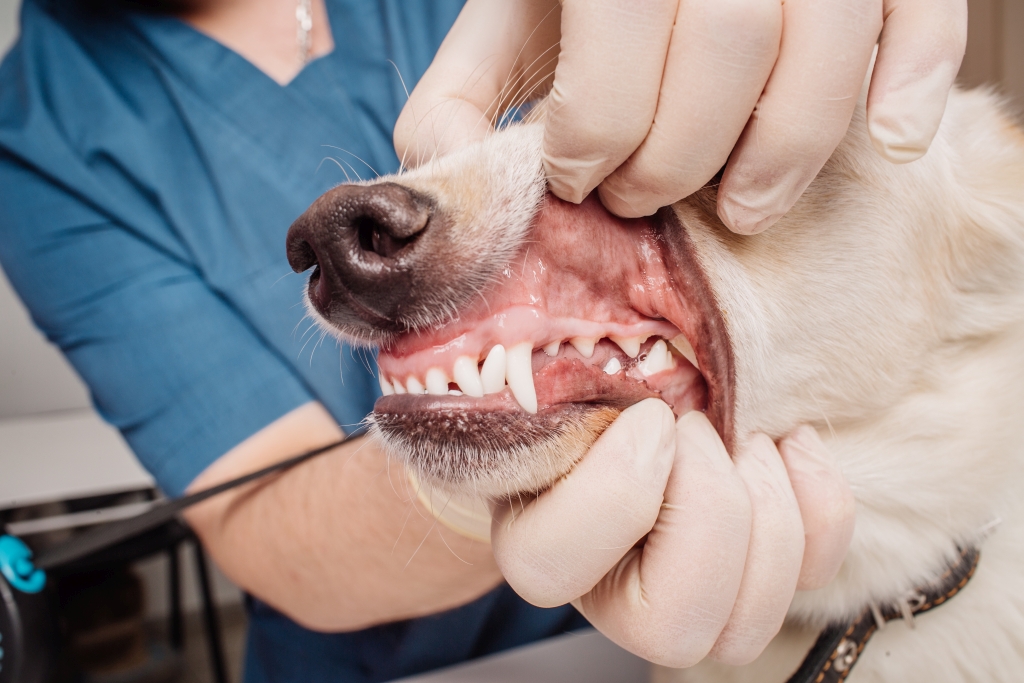
Dental chews: a dog’s favorite way to keep his or her teeth clean! Some dog treats are specially designed to promote dental hygiene. They come in shapes designed to scrape plaque off of your dog’s teeth, and contain breath-freshening flavors that will make both you and your pup happy.
Dental toys are designed to rub plaque off your dog’s teeth. They are often made of mesh or other materials that can get into the nooks and crannies of your dog’s mouth. Plus, they’re just plain fun!
Mighty Pet in Menonminee, Michigan Has Everything You Need For Your Dog’s Dental Care!
We hope this blog answered some of your questions about dog dental care, and gave you some ideas for products you can buy to support a healthy mouth for your pup! The most important takeaway is this: your dog’s dental care is an integral part of his or her overall health. When problems arise, be sure to see your vet promptly. But much like your own dental care, a dog’s dental care can mostly be managed with simple steps like toothbrushing.
When you need products to help keep your dog’s teeth and gums in tip top shape, visit us here at Mighty Pet in Menominee, Michigan for everything from dog toothbrushes to dog dental chews. We’re here to help you and your pet with everything you need to keep them happy and healthy for a lifetime!
